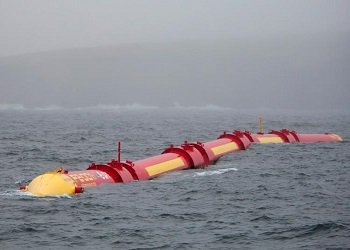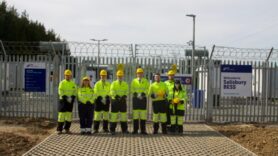The University of Dundee has won a £250,000 grant for research into reducing the costs of wave energy generators and making them more efficient.
It will be working on a three-year project with Pelamis Wave Power and will use the energy developer’s machine – the tubes of which are currently made from steel – and study if they could operate more effectively if concrete was a primary material.
Steel accounts for more than half of the 1,350 tonne weight, with the rest mostly comprising of sand ballast which is required to keep each Pelamis (pictured) at the optimal level of submergence. Using concrete as an alternative is expected to significantly reduce the cost of energy for future wave farms.
Professor Rod Jones, one of the researchers from the University said: “The incorporation of concrete into wave energy devices appears commercially and technically attractive but we have to develop and test the concrete to make it possible.
“With this project we are looking to develop concretes which will have the required stiffness and strength whilst being able to undergo extreme wave loading conditions. These concretes will also be highly durable against chemical attack from seawater and other forms of deterioration as well as being environmentally friendly. The work will also examine the cost implications of building in concrete as well as the production and manufacturing processes required.”
The cash has been granted by the Technology Strategy Board’s (TSB) Knowledge Transfer Partnership scheme. Last month the TSB also announced a £14.7 million investment funding for businesses to develop 3D printing projects for the energy and healthcare industries.





